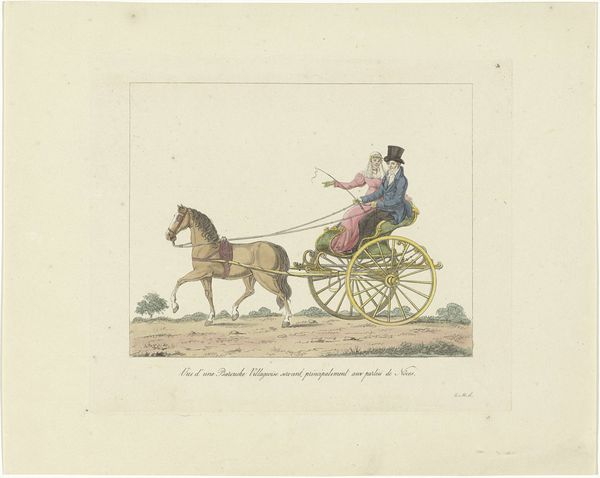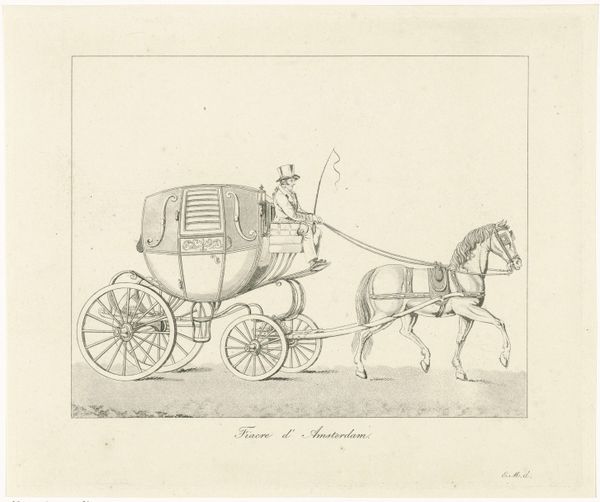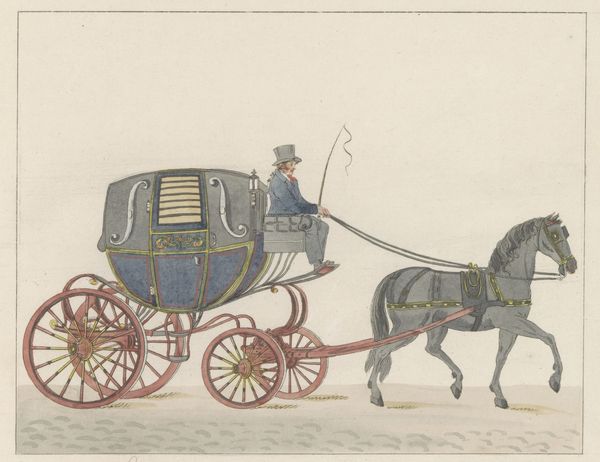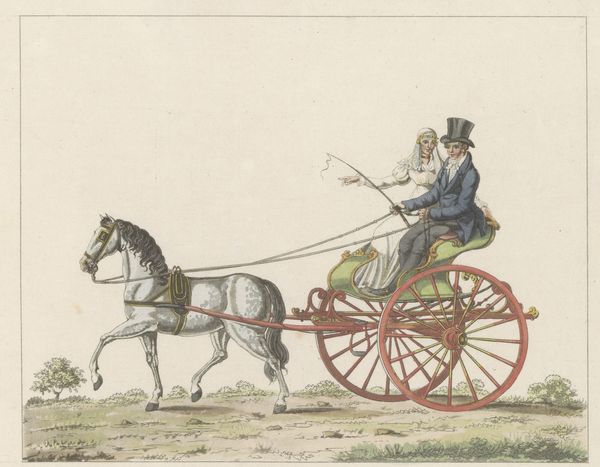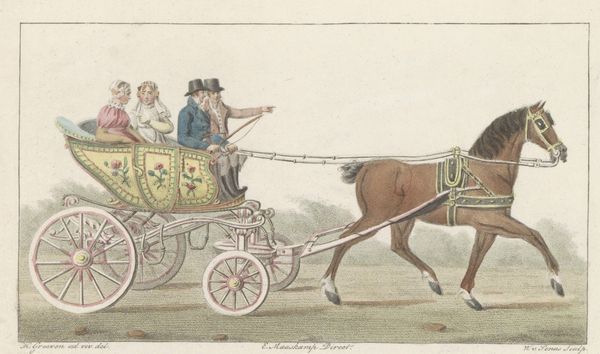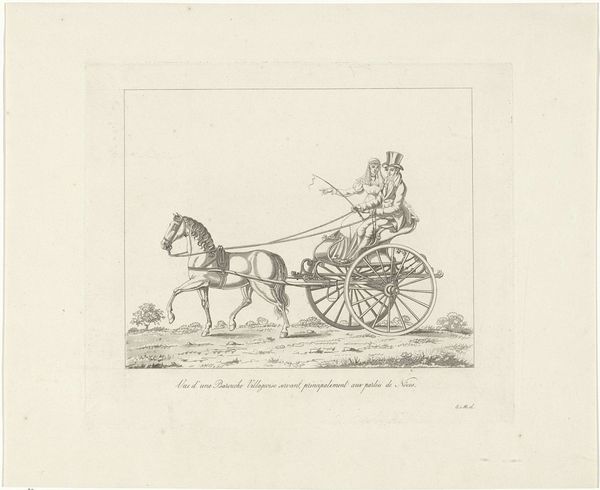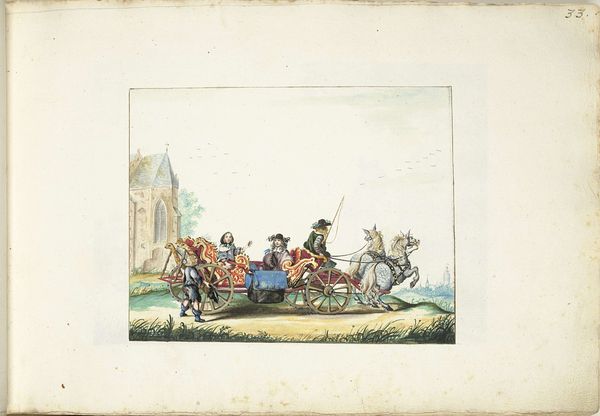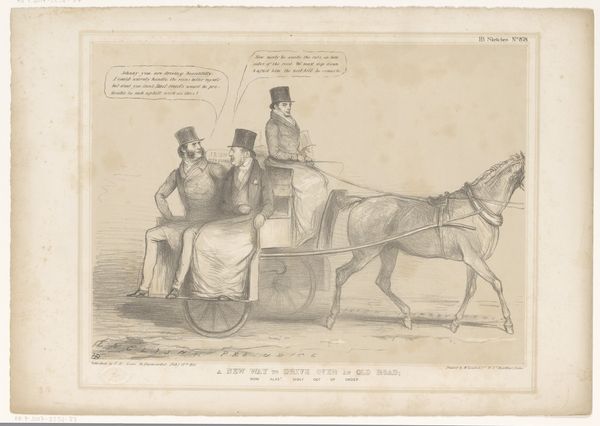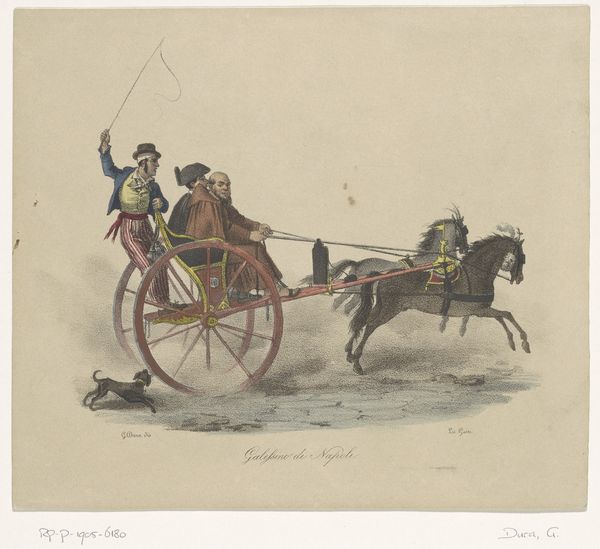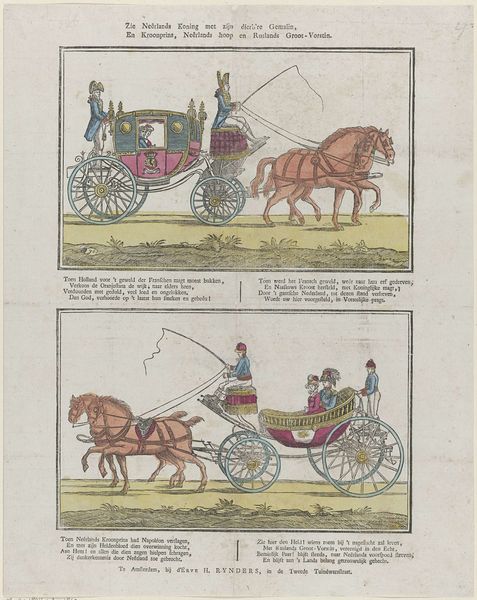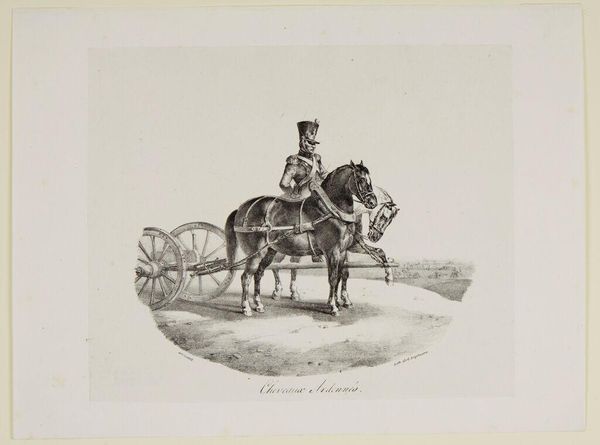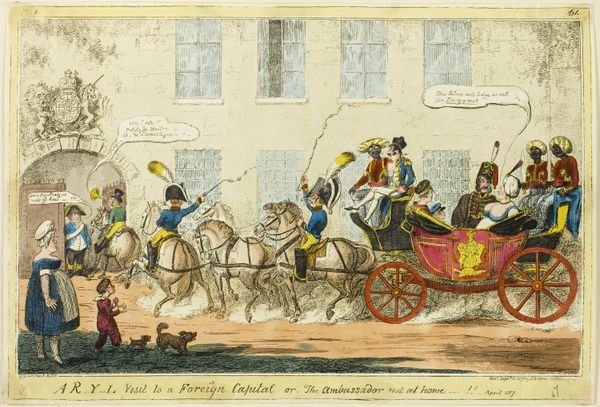
drawing, watercolor
#
drawing
#
landscape
#
watercolor
#
romanticism
#
watercolour illustration
#
genre-painting
Dimensions: height 132 mm, width 177 mm
Copyright: Rijks Museum: Open Domain
Curator: Allow me to introduce you to "Twee paren in een koets" or "Two Couples in a Carriage," a watercolour drawing by Willem van Senus, created around 1824. It resides here in the Rijksmuseum. Editor: Well, my immediate impression is that it's remarkably charming, though a little static. The artist really captured a feeling of pastoral leisure, didn't they? The light is gentle and falls evenly on the carriage itself. Curator: It does. I think it speaks to a cultural memory of the past; we get a little glimpse of a genteel pastime in early 19th-century Netherlands. It has a wonderful symbolic echo of leisure and maybe even hidden societal status for those in the carriage. Editor: Indeed, but let’s look at the compositional elements more closely. The linear precision in the carriage's design is striking, even though it's slightly off in its rendering, there's almost an innocence in its rendering. Curator: That carriage itself acts as a kind of stage, the way those figures are presented is more important than if they are exact portraits. See how the rosy palette unifies the piece, creating this delicate idyllic atmosphere? Editor: You’re right. And, the almost decorative flatness with the flowers adorning the carriage creates a contrast against the more organic and expressive form of the horse. It's a rather strange dichotomy when observed in that way. It seems the formal properties support this romantic and somewhat saccharine notion of leisure, I must say. Curator: Precisely! The carriage acts like a mobile status symbol almost adorned like a jewel. I'm drawn to the way the scene evokes themes related to the idea of wealth, privilege, and social belonging. Editor: I appreciate how focusing on composition brings forward what might otherwise remain merely an illustration, though. Thinking of brushstrokes and use of watercolour, they emphasize the Romantic period's sentimental leanings. It serves, finally, as an appealing moment. Curator: Absolutely, it underscores the fact that these artworks, though perhaps not monumental, capture little emotional ecosystems. Thank you for highlighting that formal dance, its narrative is all its own.
Comments
No comments
Be the first to comment and join the conversation on the ultimate creative platform.
